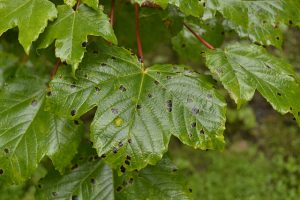Sycamore – Acer pseudoplatanus (Sapindaceae)
Gaelic: sice
Whilst sycamore is a common sight in Scottish woodlands it isn’t a native species and was introduced from Europe, possibly by the Romans. It can be found across Scotland, as it is a vigorous colonist and will tolerate salt spray and pollution, making it a popular plant for use in urban areas. Trees can reach 30m in height, with smooth grey bark, which becomes rougher with age. The leaves are a classic ‘acer’ shape with 5 lobes. It has small hermaphroditic (bisexual) flowers, which develop in to the widely recognisable winged fruit in autumn, which are loved children as they fall like helicopters.
The wood is used for small items, and is suited to making spoons and other utensils which come into contact with food as it has no strong taste. It is also used in turning and furniture making, as it is has a ‘clean’, white wood. In the past it was used as rollers in early textile mills, as it has naturally rounded stems.
It is also known as ‘Whistlewood’ in Scotland, as when the sap is rising in Spring, unbroken bark tubes can be slipped off young twigs and used to make whistles.


1 Comment
1 Pingback